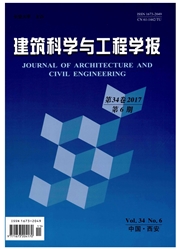

 中文摘要:
中文摘要:
在基于水泥的材料入侵氯化物离子和氯化物离子分发统治的轨道被部分在 3.5% 浸泡调查(集体部分) NaCl 答案并且充分在 3.5% 和 5.0% 埋头(集体部分) NaCl 答案,分别地并且相关入侵机制被讨论。结果显示在完整的埋头状况下面,在水泥臼的氯化物离子的入侵的轨道类似于对氯化物离子入侵垂直的直线方向,和氯化物离子内容随氯化物离子入侵的增加很快减少深度。在部分浸泡状况下面,在水泥臼的氯化物离子的入侵的轨道类似于凹面抛物线的形状,并且氯化物离子内容从底部在 2080 公里的远处沿着水泥臼样品的 lengthway 方向慢慢地减少。大量氯化物离子在毛状的上升和蒸发的效果下面在水泥臼表面层积累然后由散开效果入侵水泥臼。在部分浸泡状况下面,水泥臼由四个区域被区分,即,埋头的区域,湿区域,结晶化区域和干燥区域。
 英文摘要:
英文摘要:
Invading track of chloride ions and chloride ion distribution rule in cement-based materials were investigated by partially soaking in 3.5% (mass fraction) NaCl solution and fully immerging in 3.5% and 5.0% (mass fraction) NaC1 solution, respectively, and relevant invading mechanisms were discussed. Results indicate that under full immerging condition, the invading track of chloride ions in cement mortar is similar to beeline that is vertical to chloride ion invading direction, and chloride ion content decreases rapidly with the increase of chloride ion invading depth. Under partial soaking condition, the invading track of chloride ion in cement mortar is similar to the shape of concave parabola, and chloride ion content decreases slowly along the lengthway direction of cement mortar samples in the distance of 20-80 mm from the bottom. Lots of chloride ions accumulate in cement mortar surface layer under the effect of capillary rise and evaporation and then invade cement mortar by diffusion effect. Under partial soaking condition, cement mortar is distinguished by four areas, i.e., immerging area, wet area, crystallization area and dry area.
 同期刊论文项目
同期刊论文项目
 同项目期刊论文
同项目期刊论文
 期刊信息
期刊信息
